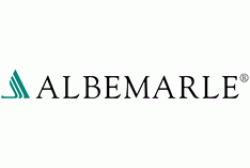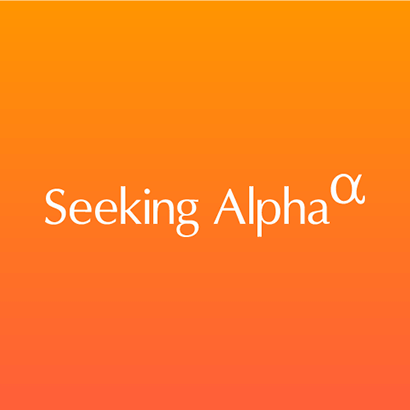GW Pharmaceuticals (NASDAQ:GWPH) made a big splash last month when the Food and Drug Administration granted approval to its Epidiolex, a purified formulation of cannabidiol, a chemical compound found naturally in marijuana. The approval sets the stage for more widespread use of marijuana in epilepsy. However, new data from trials evaluating another drug, Zogenix's (NASDAQ:ZGNX) ZX008, calls into question whether marijuana is really the best treatment option.
In this clip from The Motley Fool's Industry Focus: Healthcare, analyst Kristine Harjes and Motley Fool contributor Todd Campbell discuss how Epidiolex and ZX008 could soon wind up competing against each other in this important market.
A full transcript follows the video.
This video was recorded on July 18, 2018.
Kristine Harjes: We'll kick things off this episode with an update on the epilepsy drug market, specifically certain types of childhood onset epilepsy that respond poorly to existing treatment options. Last month, a company called GW Pharmaceuticals, ticker GWPH, won approval for the first-ever marijuana-derived drug, which was approved to treat Dravet Syndrome and Lennox-Gastaut syndrome. We touched on this on our April 25th episode after the drug got a thumbs-up from the FDA's advisory committee. Then, the drug went on to be approved. It's called Epidiolex. It's actually not yet available for sale because we're still waiting for it to be scheduled by the Drug Enforcement Administration.
The reason that we bring all of this up again is because there's some new news on the competition front in this space. Before we get to that competition, Todd, do you want to add any details on GW Pharmaceuticals' Epidiolex
Todd Campbell: Investors should know basically what it is. It's a purified version of cannabidiol. We call that CBD. If you ever hear anybody talking about marijuana and they mention CBD, that's what it is. It's one of well over 100 different things that go into making up the marijuana plant. As a matter of fact, it's the second most common thing found in the marijuana plant, accounting for about 40% of its extract -- the most common, obviously, is THC.
CBD is very intriguing to medical researchers because, unlike THC, it does not cause the euphoric high that's associated with smoking marijuana. People are thinking, if CBD is useful medically, we can get away with doing that without exposing patients to the risk of that euphoria.
The other thing that I think is interesting to know, Kristine, we obviously want to update investors on what's going on with GW Pharma, we want to talk about Zogenix, which is the competitor that just had some really interesting news come out. But, I came across this stat as I was doing my research for today's show, and it really surprised me. We don't talk about epilepsy much on this show. Did you know that there are more people with epilepsy than Parkinson's, autism, and multiple sclerosis combined?
Harjes: Wow, that's super interesting. Although, with these drugs, we are talking about very, very specific types of epilepsy that are extremely rare. But, it's interesting how widespread the broader indication is.
Campbell: I think investors have to recognize, because it's such a large patient population, and because, yes, we're talking about Dravet Syndrome and Lennox-Gastaut syndrome specifically, there is obviously the potential for this to get used off-label by doctors -- once Epidiolex got approved, and once it becomes available, doctors can write prescriptions for it off-label. There's also the chance for other studies to get done in other, more common forms of epilepsy.
Harjes: That's super interesting. Let's move right along to the competitor, which is another twist and turn in this story that's worth mentioning. The company, as you alluded to, is called Zogenix, ticker ZGNX. They had massive trading days on the market on Thursday and Friday of last week. They gained 32% of their total market cap over those two days alone, based mostly on the successful Phase III data that they reported in their drug ZX008 in Dravet Syndrome.
Campbell: Zogenix is up 415% since last August. That's a mind-numbing return. Of course, the excitement is due to ZX008 and the potential for it to maybe elbow market share away from Epidiolex, if it eventually gets FDA approval. Last fall, they reported positive outcomes from their first Phase III data in Dravet Syndrome, showing that they could reduce monthly seizures in this tough to treat patient population. Then, last week, they had the results come out for their second Phase III trial -- again, significantly reducing monthly seizures in this patient population.
Kristine, you and I talk about it all the time, you can't compare two separate studies head-to-head against one another, it's just bad science to do so. But it's very hard not to do that as an investor, especially when you look at Zogenix's information or data showing a 63% median reduction in monthly seizures for these patients vs. Epidiolex, which, depending on the trial, had a reduction of between 40-50%. Arguably, what you could probably safely say is, both of these drugs are very effective.
Harjes: You're right that it's bad science to compare, but the reason that we always follow that statement with a "but ... " is, people out there in the world, if you're a doctor looking to prescribe one of these two drugs, you're going to see those numbers. Even if you know they haven't been tested head-to-head, if you're looking for something to differentiate them, that's a very easy way to make the decision.
But -- here's another but -- safety is going to end up being an even more important part of this. Something that I want to point out from the Zogenix press release is that ZX008 was stated to be generally well-tolerated in the Phase III study, with adverse events consistent with those observed in earlier studies, and also consistent with the known safety profile of Fenfluramine. That's what ZX008 is a low dose of.
Todd, I want to get your input here on what you make of that, given that this drug, Fenfluramine, was part of the infamous Fen-Phen, an obesity drug that was pulled from the market back in the 1990s due to cardiovascular side effects.
Campbell: Breathing new life into an old, discarded drug. Fen-Phen was heralded for its ability to help battle back obesity. However, when push came to shove, after it got used in the real world, it was discovered that it could increase the risk of cardiovascular problems that could lead to death. So, the FDA asked for it to be removed from the market. I'm sure that many people will be weighing that in the back of their minds, doctors and patients, if ZX008 makes its way past the FDA to the market and they're trying to compare these competing drugs.
So far, in hundreds of patients studied by Zogenix, we have not seen any scary cardiovascular signals. It may be that they found the sweet spot, the right amount of dosing that wouldn't cause the cardiovascular problems, but still has efficacy.
The thing that investors ought to realize, too, though, is, you might think, "OK, this is a slam dunk, ZX008. It's Fen, who's going to want to prescribe that?" But, it wasn't like Epidiolex came through with a squeaky-clean safety profile, either. As a matter of fact, patients who get prescribed that drug will have to undergo constant monitoring to make sure they don't end up with elevated liver enzymes, because that was a problem that was observed in its trials.
There's a little bit of a debate here between, we have these two very efficacious products for a patient population that's in desperate need. Remember, Kristine, these people are suffering dozens of seizures per month. Frankly, they don't respond to the current antiepileptics on the market. The difference in 10% of efficacy when you're having dozens, that's a significant efficacy difference, theoretically. Kristine, I think it'll just come down to perceptions -- how do people perceive marijuana vs. how they perceive Fen-Phen.
Harjes: Yeah, absolutely. Price could be another component, but at this stage, it's too early to tell.
 The video game maker announced that its net income for its second quarter of fiscal 2018 came in at $402 million, or 52 cents per share. The figure came in ahead of the company’s net income from its year-ago quarter of $243 million, or 32 cents per share.
The video game maker announced that its net income for its second quarter of fiscal 2018 came in at $402 million, or 52 cents per share. The figure came in ahead of the company’s net income from its year-ago quarter of $243 million, or 32 cents per share. NaPoleonX (CURRENCY:NPX) traded up 4.7% against the US dollar during the twenty-four hour period ending at 15:00 PM E.T. on July 7th. One NaPoleonX token can currently be purchased for approximately $0.24 or 0.00003684 BTC on major cryptocurrency exchanges. In the last seven days, NaPoleonX has traded up 5.4% against the US dollar. NaPoleonX has a total market capitalization of $6.11 million and $595,626.00 worth of NaPoleonX was traded on exchanges in the last day.
NaPoleonX (CURRENCY:NPX) traded up 4.7% against the US dollar during the twenty-four hour period ending at 15:00 PM E.T. on July 7th. One NaPoleonX token can currently be purchased for approximately $0.24 or 0.00003684 BTC on major cryptocurrency exchanges. In the last seven days, NaPoleonX has traded up 5.4% against the US dollar. NaPoleonX has a total market capitalization of $6.11 million and $595,626.00 worth of NaPoleonX was traded on exchanges in the last day.  D.R. Barton, Jr.
D.R. Barton, Jr. The KeyW Holding Corporation, together with its subsidiaries, provides engineering and technology solutions to support the collection, processing, analysis, and dissemination of information across the spectrum of the intelligence, cyber, and counterterrorism communities in the United States. The company's solutions are designed to meet the critical needs of agile intelligence and U.S. Government national security priorities comprising cyber operations and training; geospatial intelligence; cloud and data analytics; engineering; and intelligence analysis and operations. Its products include electro-optical, hyperspectral, and synthetic aperture radar sensors and other products. The company provides its products and services to the U.S. federal, state, and local law enforcement agencies; foreign governments; and other entities in the cyber and counterterrorism markets. The KeyW Holding Corporation was founded in 2008 and is headquartered in Hanover, Maryland.
The KeyW Holding Corporation, together with its subsidiaries, provides engineering and technology solutions to support the collection, processing, analysis, and dissemination of information across the spectrum of the intelligence, cyber, and counterterrorism communities in the United States. The company's solutions are designed to meet the critical needs of agile intelligence and U.S. Government national security priorities comprising cyber operations and training; geospatial intelligence; cloud and data analytics; engineering; and intelligence analysis and operations. Its products include electro-optical, hyperspectral, and synthetic aperture radar sensors and other products. The company provides its products and services to the U.S. federal, state, and local law enforcement agencies; foreign governments; and other entities in the cyber and counterterrorism markets. The KeyW Holding Corporation was founded in 2008 and is headquartered in Hanover, Maryland. Allscripts Healthcare Solutions, Inc. provides information technology solutions and services to healthcare organizations in the United States, Canada, and internationally. It offers electronic health records, connectivity, private cloud hosting, outsourcing, analytics, patient engagement, clinical decision support, and population health management solutions. The company's Clinical and Financial Solutions segment provides integrated clinical software applications and financial and information solutions, which primarily include EHR-related, and financial and practice management software solutions, as well as related installation, support and maintenance, outsourcing, private cloud hosting, revenue cycle management, training, and electronic claims administration services. Its Population Health segment offers health management and coordinated care solutions that enable hospitals, health systems, accountable care organizations, and other care facilities to connect, transition, analyze, and coordinate care across the entire care community. The company's Netsmart segment operates in and provides software and technology solutions to the health and human services, and post-acute sectors of health care. The company serves physicians, hospitals, governments, health systems, health plans, life-sciences companies, retail clinics, retail pharmacies, pharmacy benefit managers, insurance companies, and employer wellness clinics, as well as post-acute organizations, such as home health and hospice agencies. Allscripts Healthcare Solutions, Inc. was founded in 1986 and is headquartered in Chicago, Illinois.
Allscripts Healthcare Solutions, Inc. provides information technology solutions and services to healthcare organizations in the United States, Canada, and internationally. It offers electronic health records, connectivity, private cloud hosting, outsourcing, analytics, patient engagement, clinical decision support, and population health management solutions. The company's Clinical and Financial Solutions segment provides integrated clinical software applications and financial and information solutions, which primarily include EHR-related, and financial and practice management software solutions, as well as related installation, support and maintenance, outsourcing, private cloud hosting, revenue cycle management, training, and electronic claims administration services. Its Population Health segment offers health management and coordinated care solutions that enable hospitals, health systems, accountable care organizations, and other care facilities to connect, transition, analyze, and coordinate care across the entire care community. The company's Netsmart segment operates in and provides software and technology solutions to the health and human services, and post-acute sectors of health care. The company serves physicians, hospitals, governments, health systems, health plans, life-sciences companies, retail clinics, retail pharmacies, pharmacy benefit managers, insurance companies, and employer wellness clinics, as well as post-acute organizations, such as home health and hospice agencies. Allscripts Healthcare Solutions, Inc. was founded in 1986 and is headquartered in Chicago, Illinois. Ladenburg Thalmann Financial Services Inc. grew its position in Albemarle Co. (NYSE:ALB) by 47.7% during the first quarter, according to the company in its most recent disclosure with the Securities & Exchange Commission. The firm owned 27,401 shares of the specialty chemicals company’s stock after purchasing an additional 8,844 shares during the quarter. Ladenburg Thalmann Financial Services Inc.’s holdings in Albemarle were worth $2,539,000 as of its most recent SEC filing.
Ladenburg Thalmann Financial Services Inc. grew its position in Albemarle Co. (NYSE:ALB) by 47.7% during the first quarter, according to the company in its most recent disclosure with the Securities & Exchange Commission. The firm owned 27,401 shares of the specialty chemicals company’s stock after purchasing an additional 8,844 shares during the quarter. Ladenburg Thalmann Financial Services Inc.’s holdings in Albemarle were worth $2,539,000 as of its most recent SEC filing.  Equities analysts expect NBT Bancorp Inc. (NASDAQ:NBTB) to announce earnings per share (EPS) of $0.62 for the current quarter, according to Zacks Investment Research. Two analysts have made estimates for NBT Bancorp’s earnings. NBT Bancorp posted earnings per share of $0.49 in the same quarter last year, which indicates a positive year over year growth rate of 26.5%. The firm is expected to issue its next earnings results on Monday, July 23rd.
Equities analysts expect NBT Bancorp Inc. (NASDAQ:NBTB) to announce earnings per share (EPS) of $0.62 for the current quarter, according to Zacks Investment Research. Two analysts have made estimates for NBT Bancorp’s earnings. NBT Bancorp posted earnings per share of $0.49 in the same quarter last year, which indicates a positive year over year growth rate of 26.5%. The firm is expected to issue its next earnings results on Monday, July 23rd.